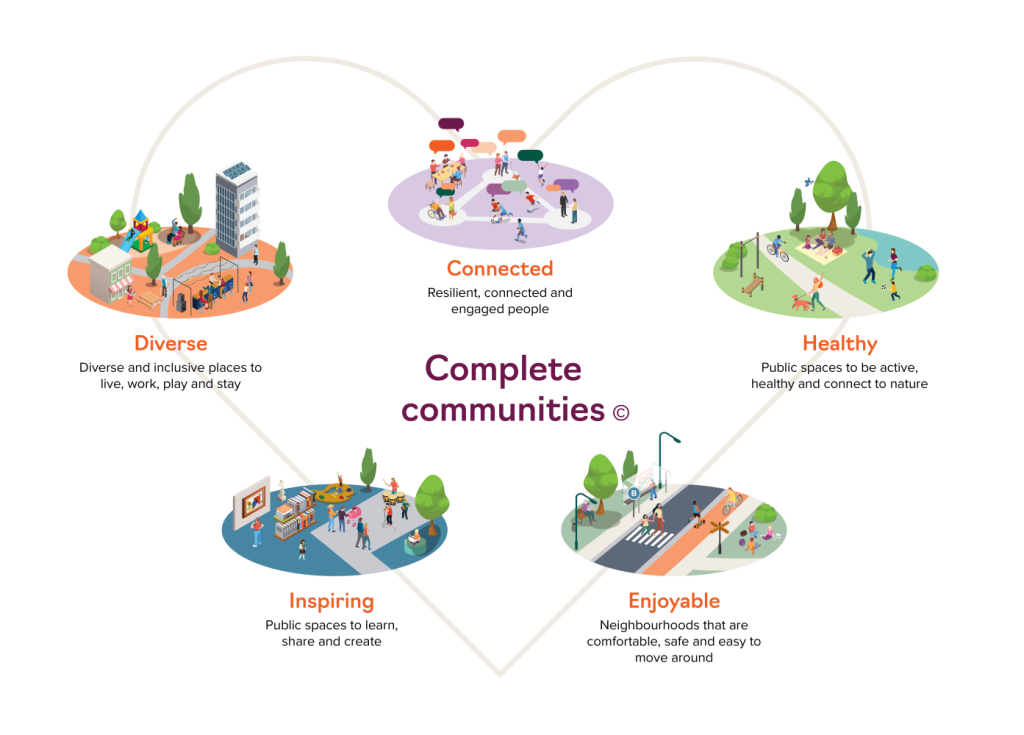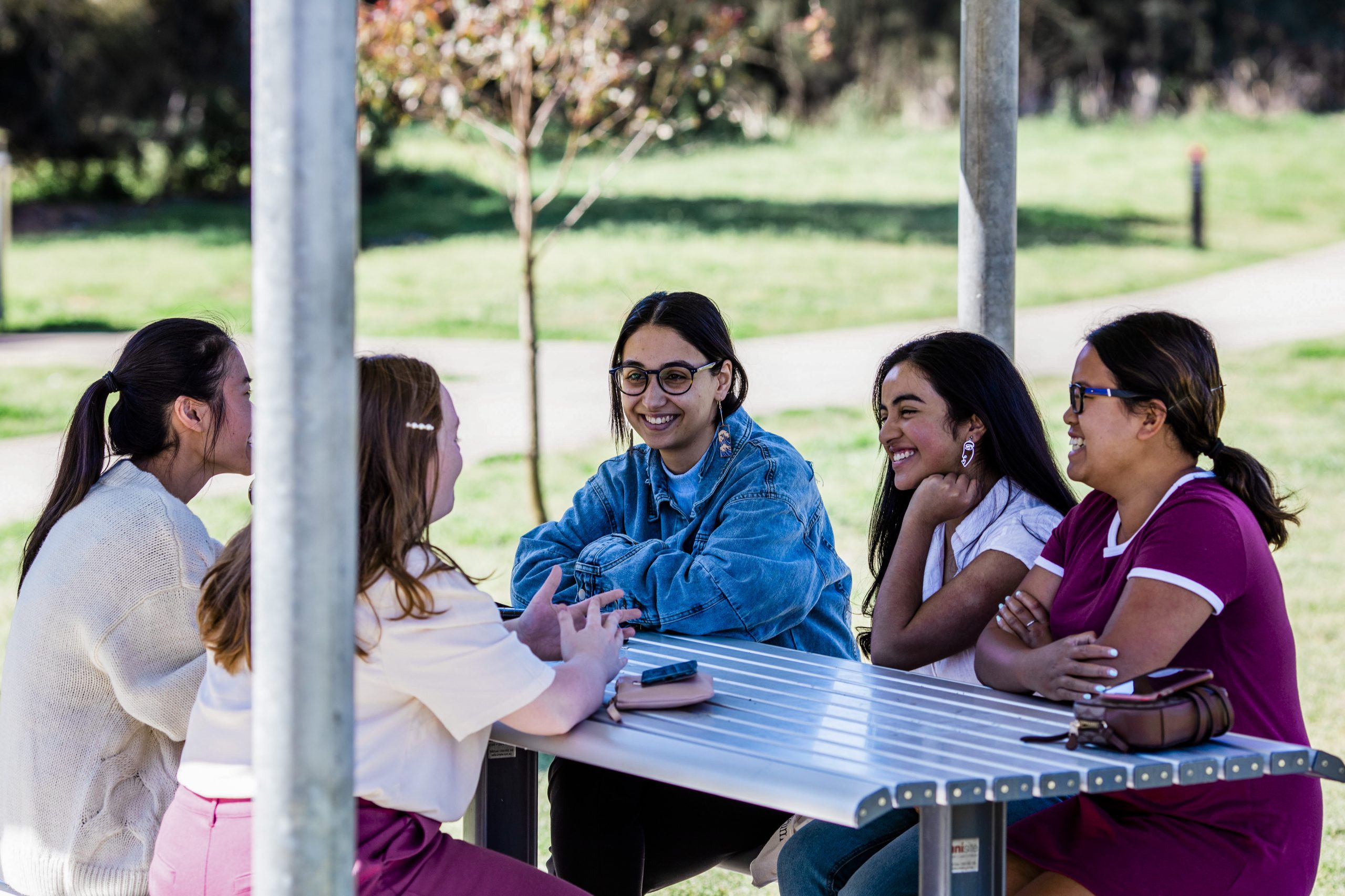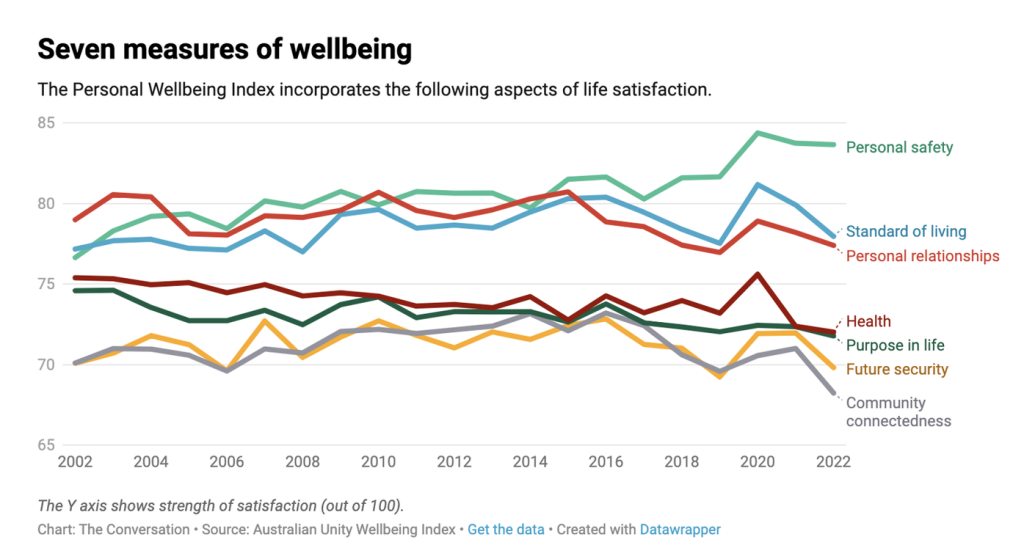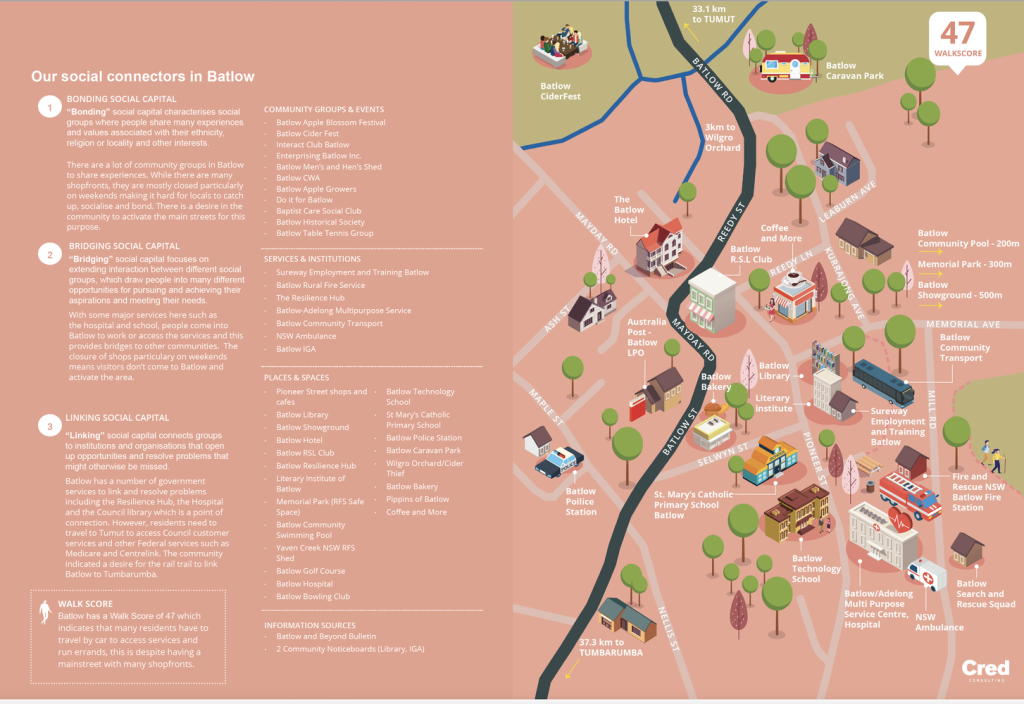Article
by Sarah Reilly, Managing Director
May, 2023
A few years ago, I visited the Danish Design Museum at a time when the Cabinetmakers Guild Autumn Exhibition was on, titled “The Social Potential of Outdoor Furniture.” The Exhibition posed the question:
“What does it take to promote dialogue between strangers in public space? How can a piece of furniture facilitate human encounters and interactions?”
I fell in love with the idea that a group of people from different disciplines (furniture designers psychologists, sociologists, artists) understood the multiple dimensions of “social cities” and would meet to share their ideas, thoughts and knowledge, all to create more human-centred places.
It’s never been more important for our cities to be more socially connected
This idea of social cities that connect people to each other, to their neighbourhoods and to democratic decision making is not new and it’s something I’ve advocated about for a long time. But now – as we are facing increasing challenges including failing infrastructure, a housing crisis, more frequent disasters, limited resources, and rising cost of living – social cohesion and community connectedness has never been more important. For our personal, communal, city and institutional health, wellbeing and resilience. It is also something that can only be achieved through cross-disciplinary and intersectional thinking and through an ideological shift in how we plan for, build and deliver equitable cities, places, and services.
Social cities are cities where we are connected by networks, services, public spaces, social infrastructure and civic engagement
The graphic below shows the core elements that work together to create a social city including its: social infrastructure; public spaces and streets; networks and relationships; services and programs; voice and influence. Social cities recognise that every person (from every background) has a right to access the essential social infrastructure and services they need (such as schools, hospitals, libraries and government services) as well as have a seat at the table about decisions that affect them, to participate in programs and community groups, and form strong bonds and relationships with each other.
Social cities are planned based on what we need and value and invest in long term social outcomes above short term profit. They know that high value, doesn’t just refer to how much money can be made out of a piece of land.
Our social connection is declining & is a barrier to our resilience in the face of disasters
Australians’ satisfaction with life as a whole is at its lowest level in 21 years, according to the latest Australian Unity Wellbeing Index survey, a collaboration between Deakin University and mutual company Australian Unity. While our sense of personal safety is at its highest, Community Connectedness is at its lowest since 2002 and has seen the most significant decline post Covid, floods and fires. This decline in community connectedness is a significant barrier to our ability to plan for, respond to, and recover from disasters, shocks and stresses.
Recent research by Macquarie University, conducted in partnership with Natural Hazards Research Australia, with a total of 192 flood-impacted residents (100 in New South Wales and 92 in Queensland) and a further 430 resident survey respondents, found that:
“There are big picture issues that affect how people were impacted by the floods – community connection and communication, local capacity for action, flexibility in disaster adaptation and personal control over decision making. If we can make change in these areas we can improve not just disaster preparedness, response and recovery, but capacity for managing any kind of adversity.”
It identified four broad challenge areas identified by the research. These are:
- the gradual erosion of trust
- the need to embrace self-activating communities and integrate community into all phases of disaster
- managing the long-term psychological impacts of an increasingly complex disaster landscape, and
- the need to see disaster support as part of a holistic person-centred approach.
Governments around the world understand that more social cities are a high need priority for our personal, city and national resilience
The Resilient Sydney Strategy 2018, which was based on collaboration of all 33 metropolitan local councils of Greater Sydney, identified a number of acute shocks and chronic stresses that are impacting on our communities and our cohesion, ranging from a lack of social connections, to failing social, health and essential infrastructure and services. It identified that social connection and cohesion, not just environmental, was central to our resilience:
1: People-centred City – About including communities in decision making, to address inequitable growth and ensure people have access to transport, housing, education and jobs.
3: Connect for strength – About addressing a decline in social cohesion and ensuring that people feel they belong in their community and city and have equal access to engage.
The US Surgeon General also recently released Our Epidemic of Loneliness and Isolation, the healing effects of Social Connection and Community which presents the evidence supporting the need for investment in the hard and soft social infrastructure, not just the bricks and mortar, but the services, programs, and activation, that creates a social city – to reduce the health and welfare impacts of loneliness, social disconnection, and lack of agency.
Time for investment in social cities, community networks and trust
It’s time to allocate real funding in the social infrastructure, programs and services that build community and social cohesion, creating the building blocks of social capital (the resources to which individuals and groups have access through their social connections) – where we can bond over things that connect us in our local public spaces; bridge relationships and networks for healthy, fulfilling, and happy lives; and link to the government and community institutions and services we need from education to planning to health and democracy.
So we can make our communities complete
Social cities are complete communities, and have what we all need, no matter our background, where we live, who we love, how we look, how much money we. have. Social cities aren’t just loveable, they’re loving. They’re not just liveable, they’re inclusive and equitable for all.
They are cities where we are engaged with each other, with the decisions that affect us, and with the places and spaces around us.




